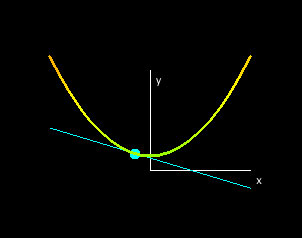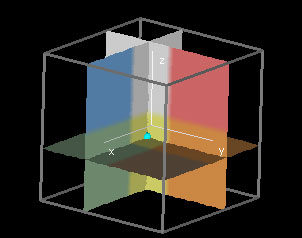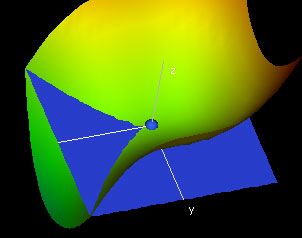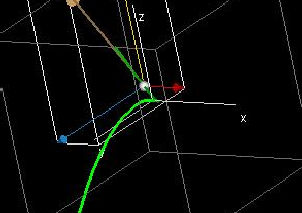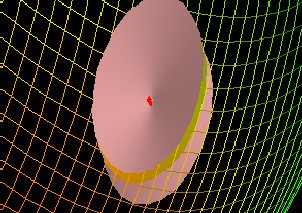The first example comes when f(x,y,z) is a function
of three variables, each of which is a function of t. We then get
w(t) = f(x(t),y(t),z(t)) and w’(t) = fx(x(t),y(t),z(t))x’(t)
+ fy(x(t),y(t),z(t))y’(t) + fz(x(t),y(t),z(t))z’(t)
. The curve (x(t),y(t),z(t),w(t)) has tangent vector
(x’(t),y’(t),z’(t),w’(t)) lying in the tangent plane to the graph w =
f(x,y,z), and this vector projects to the vector (x’(t),y’(t),z’(t),0)
in the domain. The vector above (x’(t),0,0,0) in the tangent
hyperplane is (x’(t),0,0,fx(x(t),y(t))x’(t)).
Similarly the vector above (0,y’(t),0,0) in the tangent hyperplane is
(0,y’(t),0,fy(x(t),y(t),z(t))y’(t)), and the vector above
(0,0,z’(t),0) in the tangent hyperplane is (0,0,z’(t),fy(x(t),y(t),z(t))z’(t).
The vector lying above (x’(t),y’(t),z’(t),0) will then be the sum
of these three vectors, i.e. (x’(t),y’(t),z’(t),w’(t)) = (x’(t),0,0,fx(x(t),y(t))x’(t))
+ (0,y’(t),0, fy(x(t),y(t),z(t))y’(t)) + (0,0,z’(t), fz(x(t),y(t),z(t))z’(t))
= (x’(t),y’(t),z’(t), fx(x(t),y(t),z(t))x’(t) + fy(x(t),y(t),z(t))y’(t))
+ fz(x(t),y(t),z(t))y’(t))).
The tangent line to the graph f(x(t0),y(t0),z(t0))
will then be (x(t0),y(t0),z(t0) +
u(x'(t0),y'(t0),z'(t0)). The
gradient vector of f at (x0,y0,z0)
is defined to be ∇x(t0),y(t0),z(t0)
= (fx(x0,y0,z0),fy(x0,y0,z0),fz(x0,y0,z0).
Note that the gradient vector is a vector in the domain of the
function. The chain rule can then be written in vector notation as w'(t)
= ∇f(x(t),y(t),z(t))⋅(x'(t),y'(t),z'(t)). It follows that the
function f(x(t),y(t),z(t)) has a maximum or minimum when the
gradient of f at (x(t),y(t)),z(t)) is perpendicular
to the velocity vector (x'(t),y'(t),z'(t)) at that point. In
particular, if w(t) = c, a constant, then w'(t) = 0
for all t and the velocity vector is perpendicular to the
gradient vector at all points. 


